axis
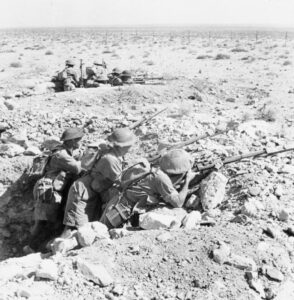
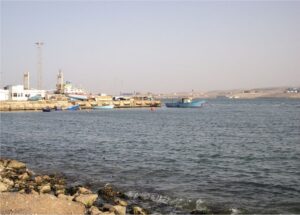 During World WarII, and probably any war, port cities are vital for the transportation of weapons, machinery, and personnel. The port city of Tobruk on Libya’s eastern Mediterranean coast is near the border with Egypt. In World War II, that may not have seemed like a particularly important port, but the Germans must have seen it as such, because in November of 1941, the Nazis laid siege to the capital of the Butnan District (previously the Tobruk District), and home to approximately 120,000 people today (although the population in 1941 was likely less).
During World WarII, and probably any war, port cities are vital for the transportation of weapons, machinery, and personnel. The port city of Tobruk on Libya’s eastern Mediterranean coast is near the border with Egypt. In World War II, that may not have seemed like a particularly important port, but the Germans must have seen it as such, because in November of 1941, the Nazis laid siege to the capital of the Butnan District (previously the Tobruk District), and home to approximately 120,000 people today (although the population in 1941 was likely less).
Tobruk began its existence as an ancient Greek colony, but later became a Roman fortress guarding the frontier of Cyrenaica. I suppose that qualifies as an important port. Tobruk became a waystation along the coastal caravan route, over the centuries. It became an Italian military post by 1911. Then, during World War II, Allied forces, mainly the Australian 6th Division, saw it a the perfect spot for a military base, and they took Tobruk on January 22, 1941. They reached Tobruk on April 9, 1941. At that time, there was prolonged fighting against German and Italian forces. Tobruk has a strong, naturally protected deep harbor. It is probably the best natural port in northern Africa. It wasn’t as popular, because it wasn’t near any landsites.
In 1941, Axis forces took over Tobruk, in a siege that would last for 241 days. The Axis forces advanced through Cyrenaica from El Agheila in Operation Sonnenblume against Allied forces in Libya, during the Western Desert Campaign of 1940–1943 in World War II. The Allies had defeated the Italian 10th Army during Operation Compass that took place between December 9, 1940 and February 9, 1941, and trapped the remnants of the troops at Beda Fomm. Much of the Western Desert Force (WDF) was sent to the Greek and Syrian campaign in early 1941. By the time German troops and Italian reinforcements reached Libya, only a skeleton Allied force remained, and they were short of equipment and supplies. It was then that the Australian 9th Division became known as “The Rats of Tobruk” when they pulled back to Tobruk to avoid encirclement after actions at Er 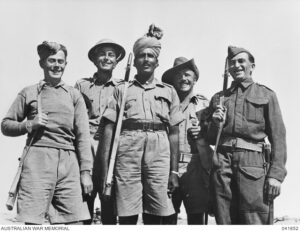
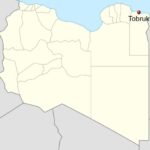 Regima and Mechili. Although the siege was lifted by Operation Crusader in November 1941, a renewed offensive by Axis forces under Erwin Rommel the following year resulted in Tobruk being re-captured in June 1942 and held by the Axis forces until November 1942, when it was finally recaptured by the Allies. Rebuilt after World War II, Tobruk was later expanded during the 1960s to include a port terminal linked by an oil pipeline to the Sarir oil field.
Regima and Mechili. Although the siege was lifted by Operation Crusader in November 1941, a renewed offensive by Axis forces under Erwin Rommel the following year resulted in Tobruk being re-captured in June 1942 and held by the Axis forces until November 1942, when it was finally recaptured by the Allies. Rebuilt after World War II, Tobruk was later expanded during the 1960s to include a port terminal linked by an oil pipeline to the Sarir oil field.
 The life of a spy is a dangerous one. Getting caught spying is often punishable by death, so the key to being a successful…and later old spy, is not to get killed, and therefore not to get caught. The spies had a number of way so fool the Nazis. One of the ways was to research the proper clothing for the area and the times, and make sure that the clothing of the spy didn’t stand out as being foreign or outdated. To miscalculated that aspect of the spy, could mean certain death.
The life of a spy is a dangerous one. Getting caught spying is often punishable by death, so the key to being a successful…and later old spy, is not to get killed, and therefore not to get caught. The spies had a number of way so fool the Nazis. One of the ways was to research the proper clothing for the area and the times, and make sure that the clothing of the spy didn’t stand out as being foreign or outdated. To miscalculated that aspect of the spy, could mean certain death.
Clothing wasn’t always the concern. When a spy is being followed, footprints can be very telling. One of the ways that the spies fooled the Nazis was the spy shoes they wore. The shoes were very functional as a way to disguise what was going on, but the looked hilarious. The idea of the shoes was to make the person following the spy think that  the spy was going the opposite direction from that which the spy was really going. Basically, the shoe was put on the sole backwards. That way, the person following the spy, would think he was walking toward the spy, when he was actually walking away from him. The technique gave the spy precious time to get far away from the enemy who was tracking him. The only problem for the spy was the shape of the shoe. It seems to me that the shape of the shoe would feel very odd to the spy. Nevertheless, the shoe was necessary, and so the spy got used to it. I suppose the feeling was similar to a child putting their shoes on the wrong feet. It is thought that the shoes might have first been used by Moonshiners during the prohibition period.
the spy was going the opposite direction from that which the spy was really going. Basically, the shoe was put on the sole backwards. That way, the person following the spy, would think he was walking toward the spy, when he was actually walking away from him. The technique gave the spy precious time to get far away from the enemy who was tracking him. The only problem for the spy was the shape of the shoe. It seems to me that the shape of the shoe would feel very odd to the spy. Nevertheless, the shoe was necessary, and so the spy got used to it. I suppose the feeling was similar to a child putting their shoes on the wrong feet. It is thought that the shoes might have first been used by Moonshiners during the prohibition period.
Our more modern day thought concerning spy shoes and other equipment is probably far more advanced. The shoes might have contained a knife in the heel or even a shoe phone, like Maxwell Smart…on the show “Get  Smart.” Of course, much of that is fiction, and I don’t know if real modern day spies even use special shoes or any other special spy tools, for that matter. The Backward Spy Shoes were a very simple tool, but it would seem that they were highly effective during World War II. The only problem I see with a shoe that takes a tracker back to the starting point of the spy who is being pursued is that it would make it impossible to return to the point of origin for fear of being tracked there. Of course if the spy walked to a public place, like a train station, and then switched shoes, they could easily get lost in the crowd, never to be found. Either way, the shoes were a clever way to outsmart the enemy.
Smart.” Of course, much of that is fiction, and I don’t know if real modern day spies even use special shoes or any other special spy tools, for that matter. The Backward Spy Shoes were a very simple tool, but it would seem that they were highly effective during World War II. The only problem I see with a shoe that takes a tracker back to the starting point of the spy who is being pursued is that it would make it impossible to return to the point of origin for fear of being tracked there. Of course if the spy walked to a public place, like a train station, and then switched shoes, they could easily get lost in the crowd, never to be found. Either way, the shoes were a clever way to outsmart the enemy.
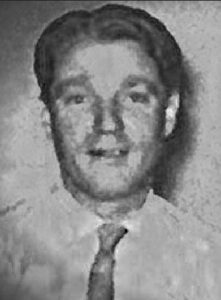 Most people have heard of, and seen, the James Bond movies. Of course, Bond is a fictional British agent, known as 007, and his character has been played by a number of actors over the years, but in reality, he is fictional. Renato Levi, who was also known as CHEESE, MR. ROSE, LAMBERT, EMILE, or ROBERTO, was a Jewish-Italian adventurer and double-agent for the British in World War II. Levi was instrumental in setting up a wireless transmitter in Cairo. The transmitter fed false information to the Axis powers over the course of the war. It was a great tool for the Allies. Unfortunately, Levi was captured and imprisoned shortly after he accomplished his mission. Levi’s “CHEESE” network helped to outflank Rommel at the battle of El Alamein in Egypt, as well as placing other, strategic misinformation that aided the Allies, including at Normandy.
Most people have heard of, and seen, the James Bond movies. Of course, Bond is a fictional British agent, known as 007, and his character has been played by a number of actors over the years, but in reality, he is fictional. Renato Levi, who was also known as CHEESE, MR. ROSE, LAMBERT, EMILE, or ROBERTO, was a Jewish-Italian adventurer and double-agent for the British in World War II. Levi was instrumental in setting up a wireless transmitter in Cairo. The transmitter fed false information to the Axis powers over the course of the war. It was a great tool for the Allies. Unfortunately, Levi was captured and imprisoned shortly after he accomplished his mission. Levi’s “CHEESE” network helped to outflank Rommel at the battle of El Alamein in Egypt, as well as placing other, strategic misinformation that aided the Allies, including at Normandy.
Levi almost always flew under the radar, especially in the British National Archives. Even in recent books about spies and counter-intelligence, the accomplishments of Renato Levi still receive barely a mention and the specifics about his part in all this is often confused. In all reality, Levi’s files have only recently been released, and even then Levi’s, aliases “Cheese,” “Lambert,” or “Mr. Rose” seem to be identified openly only once in his classified dossier. Indeed, in his national documents, there is evidence of redaction everywhere, including Levi’s primary codename “CHEESE” has been carefully handwritten in tiny, blocky letters over white-out, in order to re-establish a place in history.
The CHEESE network, out of Cairo, took a significant hit to its credibility when Levi was arrested and convicted in late 1941 or early 1942. The British came up with an imaginary agent. “Paul Nicossof” was able to regain and retain the trust of the Germans, which is one of the most interesting features of this story. Thanks to the expert manipulations of the British Intelligence operatives controlling the wireless, the CHEESE network was considered credible again by June of 1942…just in time for “A” Force to start planting counter-intelligence prior to the commencement of Operation Bertram at El Alamein in Egypt during October of 1942.
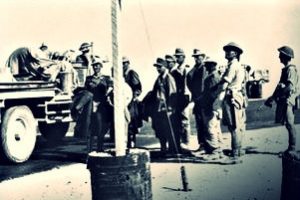 Most interesting to note are the ways that the intelligence operatives used payment schedules…or, rather, the German’s lack of payment to “Paul Nicossof”…to establish credibility about the fictitious informant’s information. “Nicossof” was portrayed as moody and inconsistent, because efforts to pay him were always unsuccessful. His “handlers” credited Germany’s inability to pay “Nicossof” as the way they were able to extend his character beyond the “impasse” that would normally constitute a non-military informant. “Nicossof” could portray himself as the “man who brought Rommel to Egypt,” which would get him paid for his troubles at last, as well as the glory and medals that went with it…all to a fictitious agent!!
Most interesting to note are the ways that the intelligence operatives used payment schedules…or, rather, the German’s lack of payment to “Paul Nicossof”…to establish credibility about the fictitious informant’s information. “Nicossof” was portrayed as moody and inconsistent, because efforts to pay him were always unsuccessful. His “handlers” credited Germany’s inability to pay “Nicossof” as the way they were able to extend his character beyond the “impasse” that would normally constitute a non-military informant. “Nicossof” could portray himself as the “man who brought Rommel to Egypt,” which would get him paid for his troubles at last, as well as the glory and medals that went with it…all to a fictitious agent!!
Perhaps because of the British Intelligence’s efforts to make “Nicossof” convincing and because Levi was so good under duress in prison, the Germans never really lost faith in the CHEESE operative network. They were starved for information, and CHEESE held the only promise for any intelligence about the Middle East. The Germans blamed the Italians for the confinement of their only key agent in the Middle East, Renato Levi. For whatever the reason, the Germans trusted Levi, but he never broke or compromised his duty to the Allied forces.
After looking at these newly declassified documents some people have tried to press Levi into the service of a “Hero Spy” figure, but in reality, Levi was a far more complicated figure and these whitewashed narratives don’t really tell the whole story of Levi’s complexity, nor the complexity of his work. Levi’s story also reveals much about the inner workings of the German Abwehr and the nature of the Italian Intelligence operations. Levi’s British handlers speculated that it was unlikely that the German and Italian Intelligence bureaus had a great deal of communication between them. The Germans were really overly satisfied with Levi’s original purpose of  establishing a wireless transmitter network, to their detriment in the end.
establishing a wireless transmitter network, to their detriment in the end.
It seems that Levi’s ultimate fate is unknown. It is true that the CHEESE network was in full swing throughout the war, and many have credited “CHEESE” with hoodwinking the Germans in a big way on many occasions. Perhaps Levi was again affiliated with CHEESE after his release, or maybe not. Regardless, Renato Levi, who had always loved travel, intrigue, and a really good lie, did a remarkable service to the Allied forces by instituting one of the best and most productive counter-intelligence operations of World War II, and he kept it all safe.

